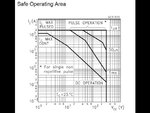patelvimal20
Junior Member level 3

Kindly any body share circuit of 100 VDC, 10A Constant current sourcing circuit.? Not SMPS. 100VDC line to 10A Constant current circuit.
Follow along with the video below to see how to install our site as a web app on your home screen.
Note: This feature may not be available in some browsers.











